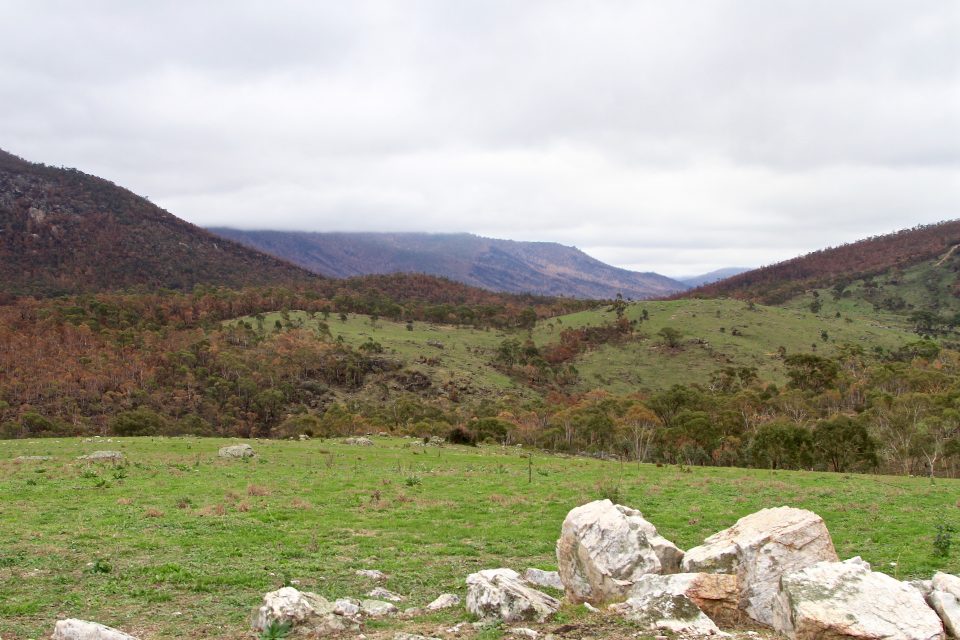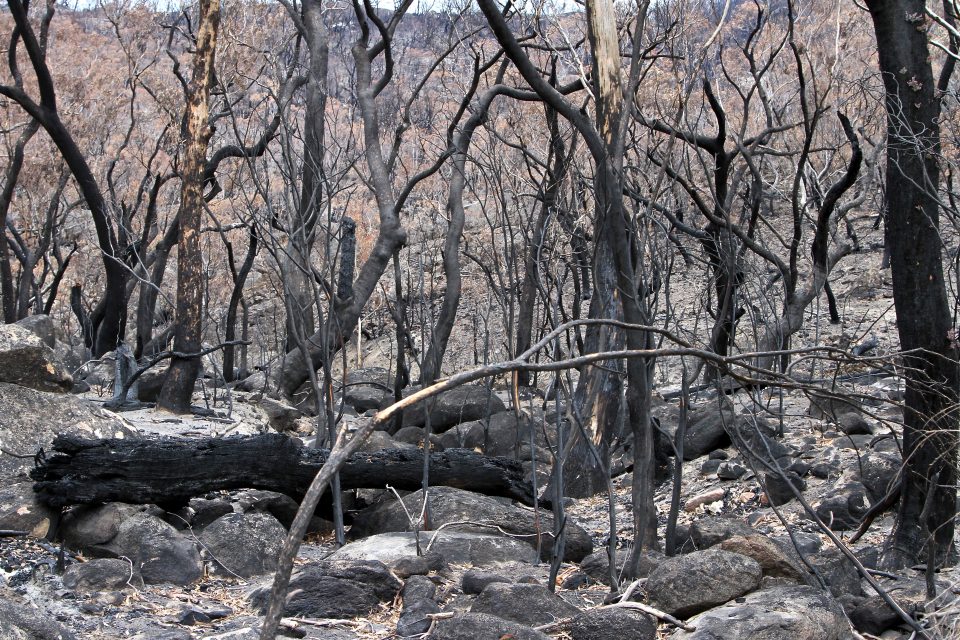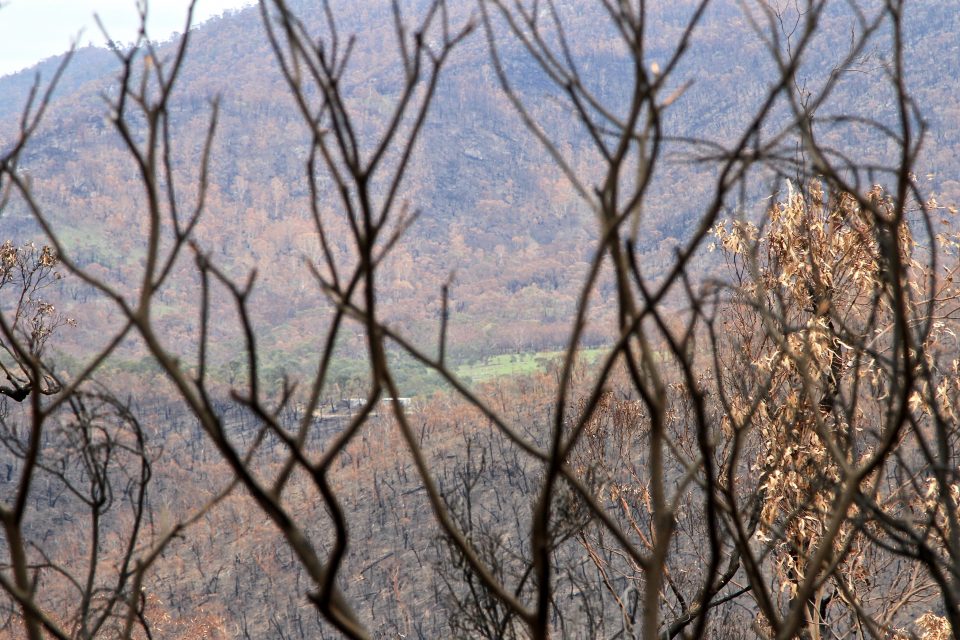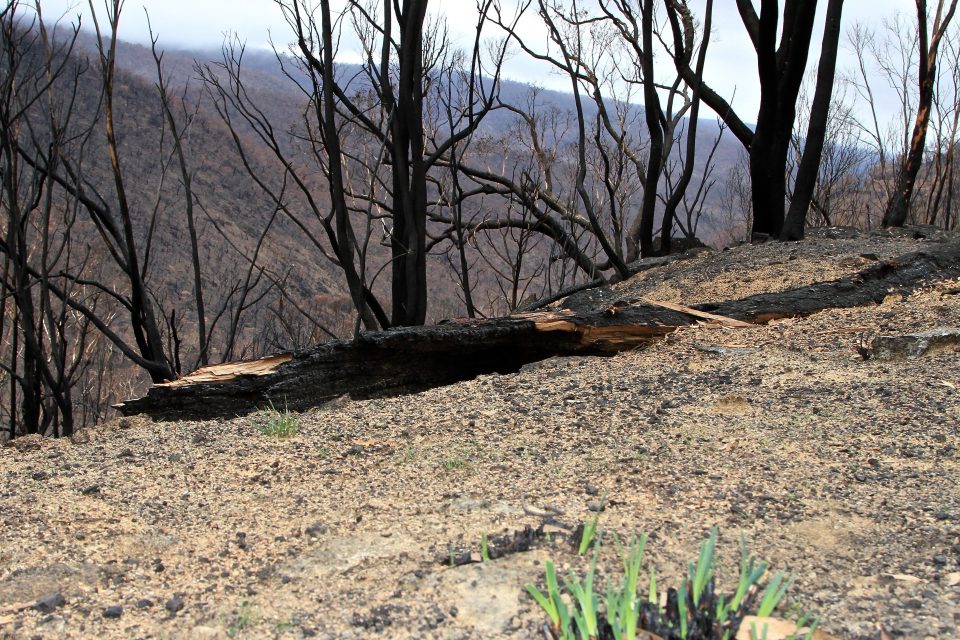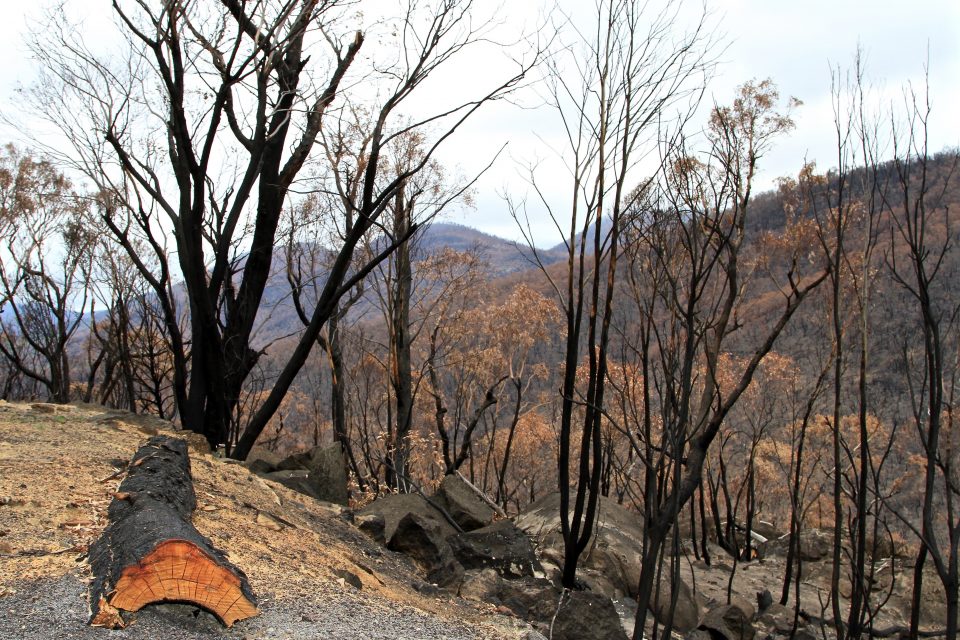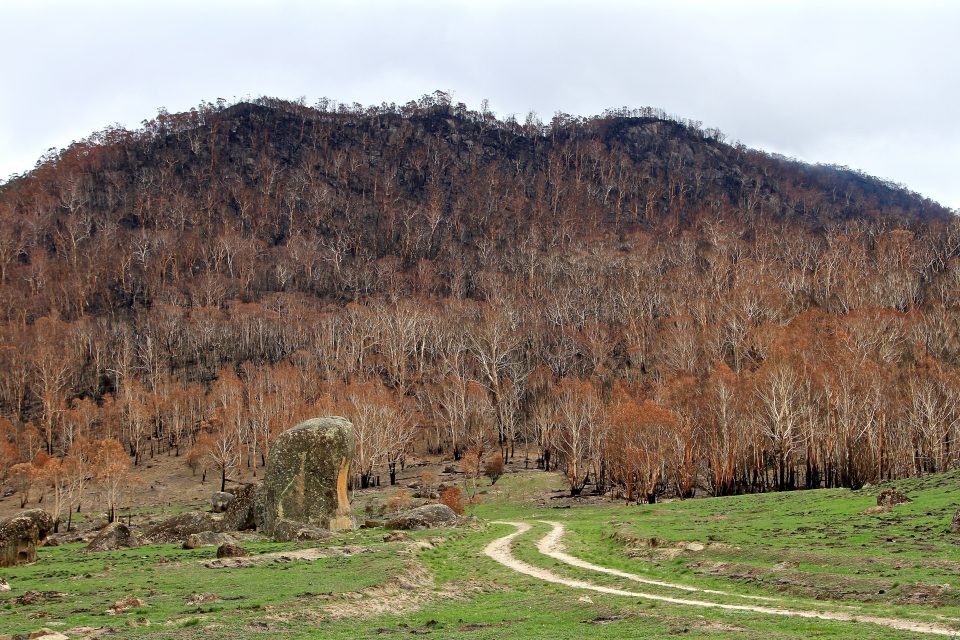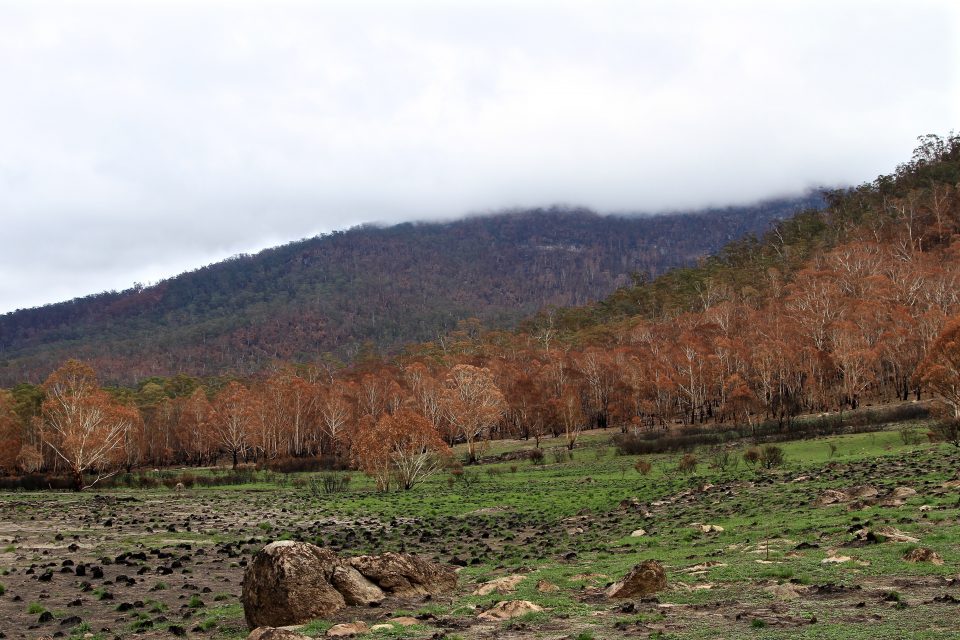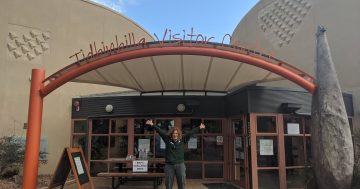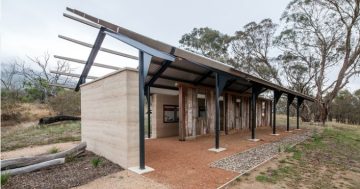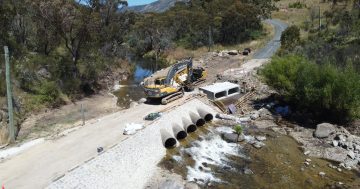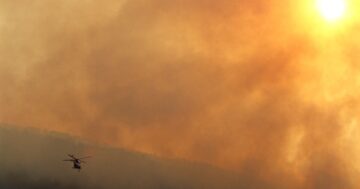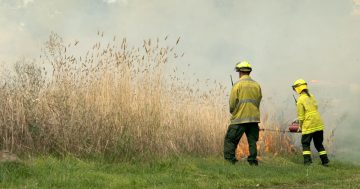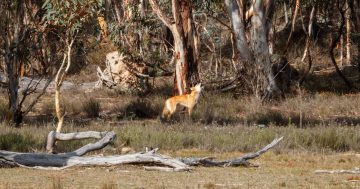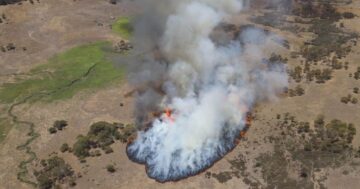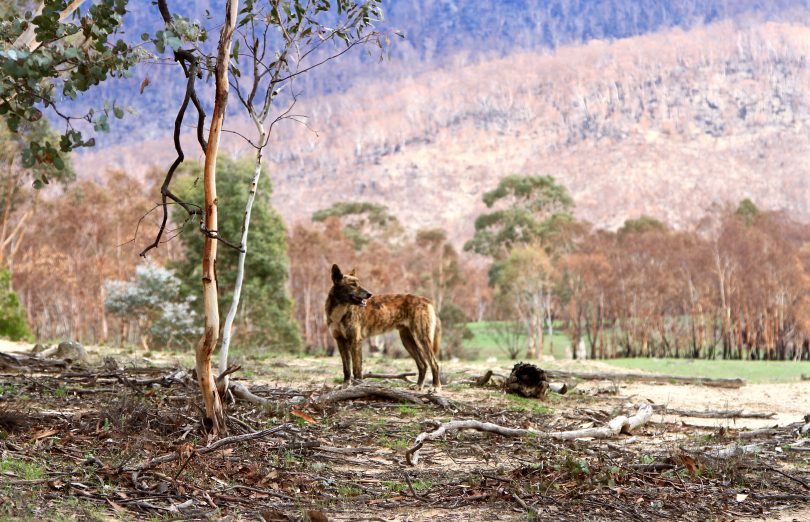
A wild dog eyes a burnt landscape in the Namadgi National Park. Photos: Michael Weaver, Region Media.
After the Orroral Valley fire, the Namadgi National Park lives on.
Region Media was given a first-hand look at the still-pristine areas of the Namadgi National Park, of which more than 80 per cent was heavily burnt by the Orroral Valley fire for 30 days in January and February.
We traverse from the Namadgi Visitor Centre into the southern entrance of the Orroral Valley, near where the fire started. It doesn’t matter how the fire began, because it definitely didn’t discriminate with the landscape it burnt.
Some areas like the Glendale Depot were just lucky that either wind or landscape meant the fire front burned around it. Other areas either side of Boboyan Road and into the Gudgenby Valley were heavily impacted.
As Park manager Brett McNamara explains, some areas look like they have been burned, yet in fact, looks are deceiving.
“As you drove in over Fitz’s Hill, you would have seen dead canopy on both sides of the road,” Brett explained. “Some of it was because of the fire. But the vast majority of it is just drought-stressed.
“People are asking questions about what made the fire do what it did, but it’s just the fact that there was so much material available for it to burn. It was so dry. There was very little we could do to stop it.”
We move on to the Gudgenby Homestead and Ready Cut Cottage, where fire suppression efforts had a massive effect in stopping the fire burning these heritage assets.
At Frank and Jack’s Hut, mineral earth containment lines, along with sprinklers that fed off large water-filled bladders kept the hut from being destroyed, while all around there is burnt landscape.
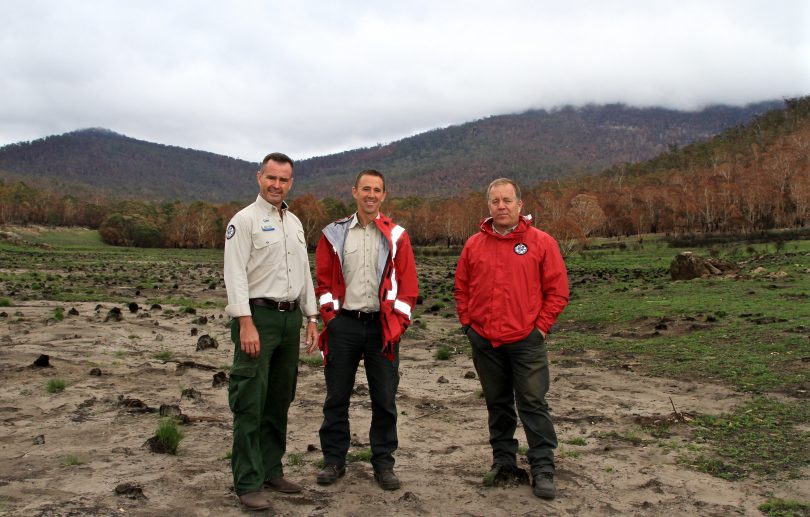
Park manager Brett McNamara and directors Peter Cotsell and Justin Foley.
Although Brett and his team members, ACT Parks directors Justin Foley and Peter Cotsell, have seen fires react in different ways, they said this fire was unique.
They watched it crown among canopies while burning against the wind.
It may be a decade before some areas of the Park completely recover. Just last week, the first signs of epicormic regrowth began to appear. This is the tree’s natural response to increase the area available for photosynthesis to occur, giving the trees a green-fur appearance.
Peter is part of the team leading the long-term recovery of the Park and is primarily concerned with the ground areas and the return of wildlife.
“We’ve done a few surveys for threatened species such as the greater glider, and we haven’t found any, but we haven’t found any injured or dead either,” Peter says.
“That either means they’ve either integrated or moved to other areas altogether.”
Even the burnt trees will become the future hollows for birds such as corellas, lizards and monitors.
The ACT Parks and Conservation teams are also ready to mitigate the weeds that are expected to manifest following this week’s rain.
They are also mapping areas that are likely to see an influx of feral animals such as cats, foxes and herbivores such as deers, pigs and horses. One of these areas is the Bogong Swamp catchment area in the Gudgenby Valley below Mt Namadgi.
Brett McNamara calls it the ‘kidney’ of the landscape, with the wetland acting as a natural filter. It is normally full of water with waist-high reeds but is now full of sediment washed down from the mountains. The reeds are just beginning to regrow.
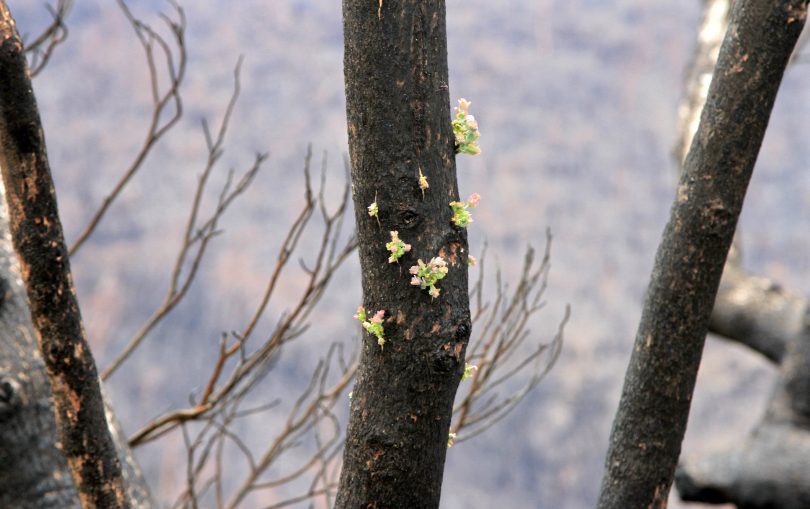
Epicormic growth showing the first signs of life.
Brett saw it happen in 2003 and he and his team are seeing it all over again now.
“The big issue now is to do with the frequency and intensity of the fires,” he says. “This is where we are now in uncharted territory.
“More fires will change the way these forests recover and the response will be one also has to adapt to a drier landscape. Despite all the rain we’ve had, we still have dead canopies which shows you just how dry it was.
“The lesson is that we do not want to see this become the new norm.”
As we begin to exit the Park, we see a wild dog eyeing off a mob of kangaroos, similar to an encounter filmed there by David Attenborough many years ago. Brett said it is a perfect example of the natural predator-prey relationship in the Park.
“It’s not feral, it’s a wild dog and genetically, it relates back to the dingo,” Brett says. “It is the top order predator and we need that here as part of a functioning ecosystem that keeps the Park alive.”
